FASHION
What Hats Did Kids Wear?
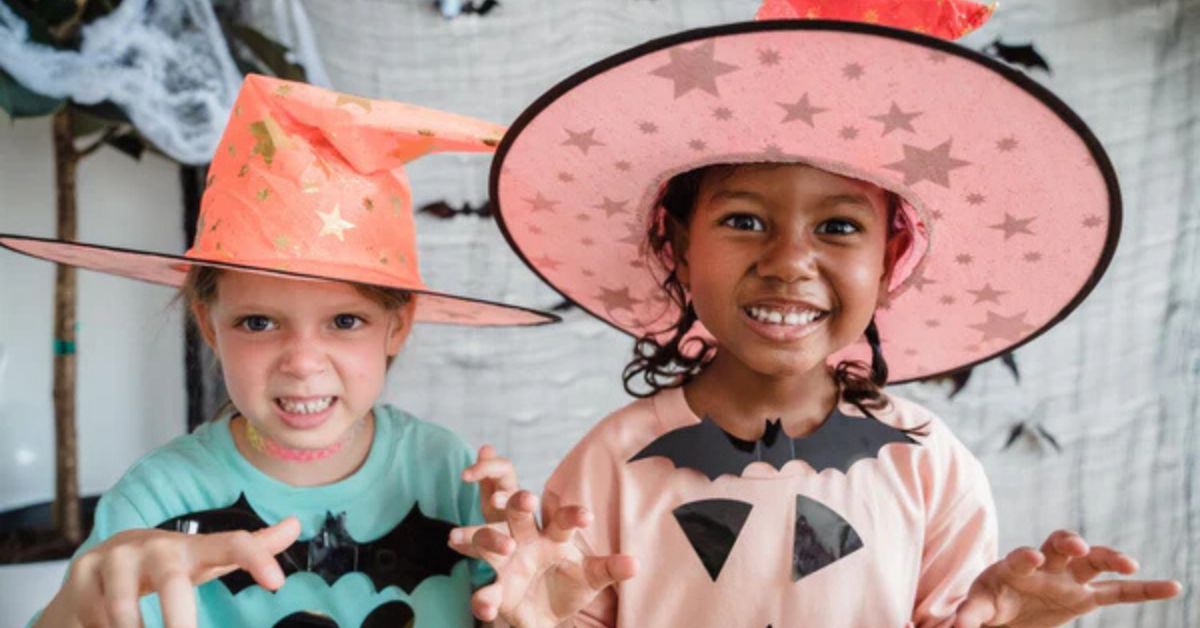
What Hats Did Kids Wear? A Look Into Historical and Modern Styles
What did kids wear for hats? Hats have long been an essential part of children’s fashion, evolving through different time periods, cultures, and trends. From practical headgear for protection to stylish accessories for completing an outfit, kids’ hats have seen many changes over the years. In this article, we will explore the history of hats for children, highlighting the styles they wore through the ages and how they have changed to reflect societal shifts in fashion, function, and culture.
The Early History of Kids’ Hats
The tradition of children wearing hats dates back centuries, and much like adult fashion, children’s headwear evolved as society advanced. In earlier periods, hats were often worn for practical reasons, such as protecting the head from the sun or keeping warm. Over time, hats became more decorative, serving as both a fashion statement and a cultural symbol.
1. Medieval and Renaissance Era
During the Medieval and Renaissance periods, children’s clothing was heavily influenced by social class and practicality. In these times, children were typically dressed in versions of adult clothing, and their hats were no exception.
-
Chaperon: A common headpiece for both boys and girls in the 14th and 15th centuries was the chaperon. The chaperon was a versatile garment that could function as a hat, hood, or even a scarf. It was often made from wool or other warm fabrics, as it was meant to protect children from the cold weather.
-
Hoods and Bonnets: Children during the Renaissance also wore simple hoods or bonnets, particularly girls. These were often made from cloth and tied under the chin for warmth and modesty.
In these early years, children’s hats were not just fashionable—they had functional purposes, especially when it came to providing protection from the elements.
2. The 18th and 19th Centuries
By the time the 18th and 19th centuries rolled around, hats for children started to reflect more distinct styles, influenced by the fashion trends of the adult population.
-
Tricorn and Bicorne Hats: In the 18th century, both boys and girls wore fashionable tricorn (three-cornered) and bicorne (two-cornered) hats. These hats were often part of formal outfits and were worn for special occasions or ceremonies.
-
Bonnet for Girls: For girls, bonnets remained popular throughout the 19th century. These bonnets were typically worn to protect against the sun, and they were often elaborately decorated with ribbons, lace, and other accessories.
-
Top Hats for Boys: During the 19th century, boys’ fashion was heavily influenced by adults, and top hats became a popular style for formal events. As children began to attend school, the top hat also emerged as part of the uniform for young boys in certain regions.
The 20th Century: The Rise of Casual Wear
As we moved into the 20th century, children’s clothing and headwear became increasingly casual, with fashion influenced by trends from around the world.What did kids wear for hats. The practical function of hats still remained, but they began to reflect the changing lifestyles of children as they became more active and independent.
1. 1920s to 1940s: The Classic Hat Styles
In the early 20th century, children began to wear more practical hats that reflected the growing importance of leisure and outdoor activities.
-
Cloth Caps: Boys’ headwear during this time was often comprised of cloth caps, such as the newsboy cap. These caps were made from tweed or wool and were often worn by children in working-class families. The newsboy cap became synonymous with youth and innocence during this period.
-
Sun Bonnets and Straw Hats: Girls, on the other hand, wore lightweight bonnets made from cotton or straw, ideal for keeping the sun off their faces during outdoor activities. These bonnets were often paired with summer dresses and were primarily worn during the warmer months.
-
Berets: In the 1930s and 1940s, berets became a fashionable hat for both boys and girls. These woolen hats were popular in Europe and became a symbol of European childhood fashion. Berets were often worn as part of a school uniform or for more casual outings.
2. 1950s to 1970s: A Decade of Innovation in Children’s Fashion
The mid-20th century saw a huge shift in children’s fashion, as postwar prosperity allowed for more variety in clothing and accessories.
-
Pillbox Hats for Girls: In the 1950s, pillbox hats, which were often worn by women during this period, were adapted for young girls. These small, rounded hats were typically worn with fancy dresses and were part of the formal wear for children attending parties or special events.
-
Bucket Hats and Caps: The 1960s and 1970s saw the rise of bucket hats and baseball caps. These hats were practical and served to shield children from the sun, especially in outdoor activities or sporting events. Baseball caps, in particular, became a popular choice for boys, associated with youth sports culture and casual weekend outings.
-
Sun Hats: For girls, wide-brimmed sun hats made from straw or fabric became a go-to accessory for outdoor play and family outings. These hats offered both protection from the sun and a touch of femininity to their outfits.
The Modern-Day: Trends and Practicality
As we moved into the late 20th and early 21st centuries, hats for children became more diverse and fashion-forward. Today, kids wear hats for a wide variety of reasons, from fashion and trends to sun protection and comfort.
1. Sports Caps and Beanies
In the modern-day, sports caps—especially baseball caps—have remained a staple of children’s wardrobes. These hats are often decorated with logos, sports teams, or favorite characters, making them both fashionable and functional.
-
Baseball Caps: These continue to be among the most popular hats for kids, whether they are worn during sports activities or as part of a casual outfit. Baseball caps are available in various styles, including snapbacks, fitted caps, and adjustable options to ensure comfort for kids of all ages.
-
Beanies: In colder climates, beanies have become a must-have accessory for children. These knitted hats are perfect for keeping kids warm during the winter months and are often worn with casual attire. Beanies are popular among both boys and girls and are available in many different colors, patterns, and designs.
2. Fashionable Hats and Accessories for Kids
In today’s fashion-driven world, hats for kids are more about style than practicality. Many children now wear hats to make a fashion statement or to match their favorite outfits.
-
Fedora and Trilby Hats: While traditionally adult headwear, fedoras and trilby hats have become stylish accessories for kids, especially for those attending formal events like weddings or parties. These hats add a touch of sophistication to children’s fashion, with many made from felt or straw materials.
-
Floppy Hats: For girls, floppy hats have become popular for both casual and dressy occasions. These hats are often worn during summer holidays, beach trips, or at outdoor events. The wide brim provides sun protection while adding an elegant flair to outfits.
-
Animal Hats: In recent years, fun and quirky animal hats have gained popularity. These hats often feature animal ears, faces, or fur, making them popular with younger children. Animal hats are often worn in colder weather to keep children warm, while also offering a fun, playful look.
3. Functionality and Health Considerations
In today’s world, sun protection has become an important consideration in children’s clothing. As a result, many modern hats for kids come with built-in UV protection, designed to shield their faces and necks from harmful sun exposure.
-
Wide-Brimmed Hats: Parents are increasingly opting for wide-brimmed hats to protect their children from the sun. These hats offer full coverage and are perfect for outdoor activities, such as hiking, beach days, and sporting events.
-
Sun Hats with UPF: Today, many hats designed for children come with UV protection fabric to safeguard young skin from sunburns. These hats are especially important for children who spend extended periods outdoors.
Conclusion: The Evolution of Kids’ Hats
What did kids wear for hats. Hats for children have undergone a significant transformation over the years. From simple, practical headwear to fashionable accessories, kids’ hats have mirrored changing trends, cultural influences, and the growing importance of personal expression. Whether used for warmth, sun protection, or as a fashion statement, hats remain an essential part of children’s wardrobes.
As we move forward, it’s clear that the diversity and versatility of children’s hats will continue to evolve, with an increasing focus on functionality, comfort, and, of course, fun! So whether your child is sporting a classic baseball cap, a quirky animal hat, or a stylish wide-brimmed sun hat, it’s clear that kids’ hats are here to stay.
FASHION
How to Choose the Right Ingredients for Skincare Products
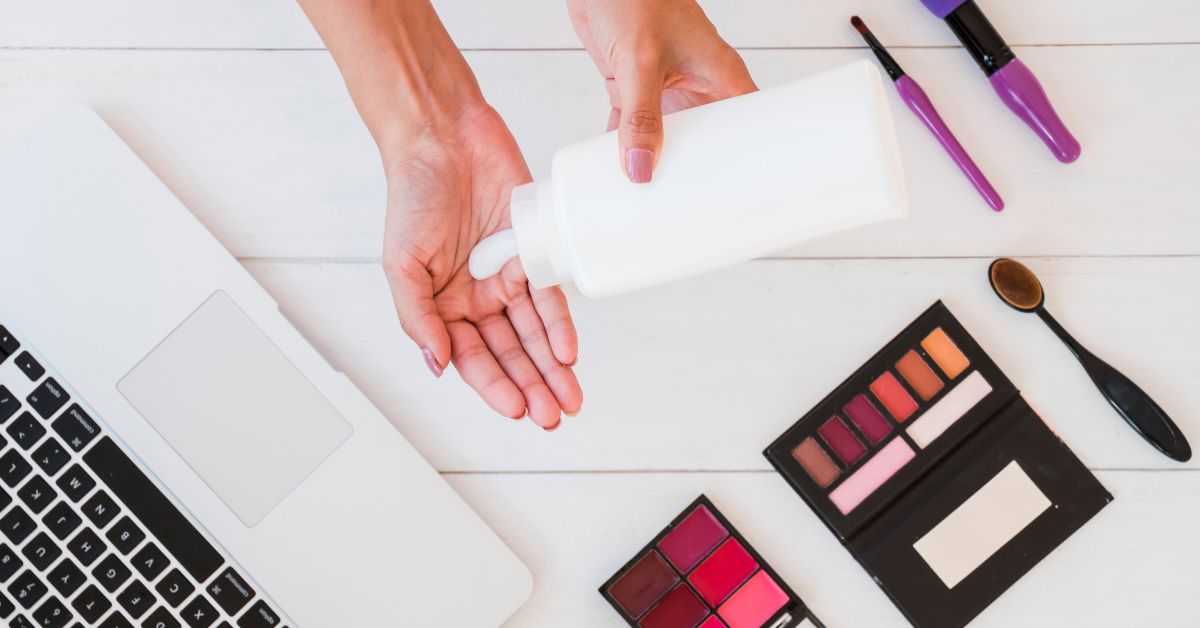
Choosing the right skincare ingredients is one of the most important steps in creating products that truly deliver results. Whether you are starting a private label skincare brand or simply exploring what goes into your favorite beauty products, understanding skincare ingredients is essential.
With thousands of options available—from plant extracts to synthetic compounds—selecting the right combination can be challenging. This guide will help you understand how to pick the best skincare ingredients based on skin types, product goals, and market trends.
Why Ingredients Matter in Skincare
Every skincare product is only as good as the ingredients it contains. The choice of ingredients impacts:
- Product effectiveness
- Skin compatibility
- Market positioning
- Shelf life and safety
For private label skincare companies or cosmetic manufacturers, these decisions define the product’s success. Using high-quality, well-researched ingredients builds customer trust and brand reputation.
Understand the Role of Fatty Alcohols in Skincare
One of the most common but misunderstood groups of skincare ingredients is fatty alcohols. Unlike drying alcohols such as ethanol or isopropyl alcohol, fatty alcohols are beneficial for the skin. They are usually derived from natural sources like coconut oil or palm oil.
Fatty alcohols serve multiple functions:
- Emulsifiers: Help oil and water mix smoothly
- Emollients: Soften and smooth the skin
- Thickeners: Improve product texture and stability
For more detailed information on this topic, you can visit this guide about fatty alcohols in skincare. It explains how these ingredients work and why they are commonly found in moisturizers, creams, and lotions.
Consider Skin Type Compatibility
Before selecting ingredients for any skincare product, you must think about different skin types:
| Skin Type | Best Ingredients | Avoid |
| Dry Skin | Hyaluronic acid, fatty alcohols, shea butter | Harsh exfoliants |
| Oily Skin | Niacinamide, salicylic acid, light oils | Heavy occlusives |
| Sensitive Skin | Aloe vera, chamomile extract, panthenol | Strong fragrances |
| Aging Skin | Retinol, peptides, antioxidants | Over-drying agents |
A successful skincare formula meets the needs of specific skin concerns without causing irritation or imbalance.
Look for Ingredient Synergy
Some ingredients work better together. This is called ingredient synergy, and it’s crucial for developing effective skincare formulas.
Examples include:
- Hyaluronic Acid + Ceramides – Hydration and barrier repair
- Vitamin C + Ferulic Acid – Boosted antioxidant protection
- Fatty Alcohols + Emollient Oils – Improved skin softness without greasiness
When developing private label skincare products, manufacturers often experiment with combinations to achieve the best results.
Focus on Clean and Safe Formulations
Consumers today are more educated and cautious about what they put on their skin. Terms like “clean beauty” and “safe cosmetics” are now mainstream.
Consider these points when choosing ingredients:
- Use non-toxic, skin-friendly components
- Avoid controversial ingredients like parabens and sulfates
- Opt for eco-friendly and sustainable sources
Working with reputable skincare manufacturers like Zicail ensures access to safe, high-quality raw materials and private label support.
Emphasize Innovation and Product Development
In the beauty industry, innovation is key. New ingredient technologies and trends can set your product apart. Some current trends include:
- Probiotics and prebiotics for skin microbiome balance
- Peptides for anti-aging and skin repair
- Botanical extracts for natural product lines
- Fatty alcohols and plant-based waxes for eco-conscious formulations
Staying ahead of these trends helps brands capture new markets and satisfy consumer demand.
Test for Stability and Effectiveness
Once you’ve selected your skincare ingredients, it’s essential to conduct testing:
- Stability Testing – Ensures the product maintains texture and effectiveness over time
- Patch Testing – Checks for skin sensitivity or allergic reactions
- Efficacy Testing – Proves that the product delivers on its claims
Partnering with experienced contract manufacturers helps streamline this process, providing access to professional labs and testing services.
Understand Private Label Skincare Benefits
Private labeling allows businesses to launch skincare lines without building factories or developing complex formulations from scratch. Instead, you partner with an established manufacturer who provides:
- Product development support
- Ingredient sourcing
- Packaging and design options
- Quality control and regulatory compliance
For brands looking to enter the skincare industry quickly and efficiently, private label skincare offers an excellent solution.
Build Trust with Quality Assurance
In skincare, quality assurance is non-negotiable. Consumers need to know that the products they use are safe, effective, and ethically made.
Good manufacturers provide:
- ISO certifications
- GMP (Good Manufacturing Practice) compliance
- Traceable ingredient sourcing
- Multilingual customer service to support global distribution
Zicail, for example, specializes in high-standard private label services and cosmetic manufacturing, making it easier for brands to maintain trust and consistency.
Conclusion: Make Smart Ingredient Choices for Skincare Success
Selecting the right ingredients is the foundation of a successful skincare product. Whether you’re a startup brand or an established beauty company, focusing on ingredient quality, innovation, and customer needs will help you grow.
By partnering with experienced manufacturers, using safe and effective ingredients like fatty alcohols, and paying attention to current trends, you can create skincare products that consumers love and trust.
For a deeper understanding of specific ingredients, check out this resource on fatty alcohols in skincare to learn how they benefit formulations and skin health.
CLICK HERE FOR MORE BLOG POSTS
FASHION
Royal Tips: The Princess Nails Look

Royal Tips: The Princess Nails Look
A Regal Introduction to Aesthetic Elegance
Step into a world where grace meets simplicity and transform your manicure into an elegant statement. The princess nails trend is all about short, squoval or oval-shaped nails, enhanced with sheer pink or nude tones, a glossy finish, and occasionally subtle sparkle for that royal allure.

Why It Reigns Supreme
This refined manicure embraces minimalism inspired by soap, glass, and BB cream nails—but adds a feminine pink glow reminiscent of Kate Middleton’s classic style.It’s approachable, recession-proof, and salon-friendly—lasting longer as nails grow out invisibly.
Essentials of the Princess Nails Aesthetic
Nail Shape & Prep
The foundation of regal manicures lies in nail shape and care. Princess nails are typically short and squoval (square with rounded edges) or oval, promoting a tidy, modern look. Expert Julia Diogo advises prioritizing nail prep—clean cuticles, gentle buffing, and a hydrating base coat—to ensure a “no‑makeup” polish result.
Color Palette & Polish
A soft, sheer color palette is key—think pale pinks, milky neutrals, and nude tones. Popular shades include Essie’s Mademoiselle, OPI’s Baby, Take a Vow, Dior’s Snow Pink, and Aprés Nails “Pink Clouds” or “Catching Feelings“. These hues offer an understated elegance perfect for everyday charm.
Advanced Royal Accents
While simplicity reigns, small touches of sparkle can elevate the look into truly magical territory.
Glitter & Sparkle
A transparent glitter or glazed top coat adds a princess-worthy shimmer. Popular picks include Essie’s Gilded Galaxy and Olive & June’s Frosted Gloss, which lend just enough magic without overpowering.
Gemstone Nail Charms
To add sophistication, tiny rhinestones, pearls, or delicate vinyl stencils in white, gold, or pastel shades can be applied. These accents recreate themes like “ice princess,” floral motifs, or mini crown jewels.
Seasonal & Themed Variations
| Theme | Description |
|---|---|
| Ice Princess | Use pale blue, silvers, and glitter for a frosty, wintry vibe |
| Cinderella-Inspired | Combine soft blue polish, glass slipper decals, and clock motifs |
| Minimalist Disney | Sheer pink base with subtle character icons or ombré techniques |
These seasonal variations let you channel your favorite royal or Disney princess while maintaining the core elegant aesthetic.
Nail Care Tips for Long‑Lasting Royalty
-
Base & Top Coat: Essential for chip resistance and shine. A quality top coat seals charm and gloss.
-
Cuticle Care: Regular moisturizing and cuticle oil ensure a clean, soft look—key for a polished manicure.
-
Gentle Buffing: Smooth nail surfaces help the polish adhere and shine like a true princess.
-
Press‑ons: For an easy DIY approach, consider press-on kits from Olive & June (Gelato) or KISS (Pure Love) for high‑gloss results without the salon trip.
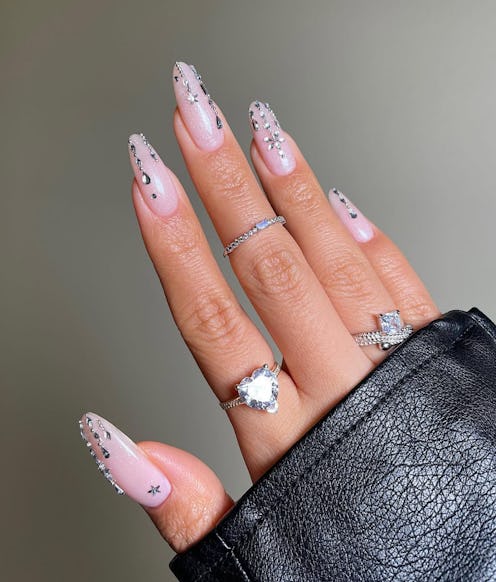
FAQs
Q: How long do princess nails last?
A: With proper prep, a quality base and top coat, expect a chip-resistant manicure that lasts up to 7–10 days—even longer if you opt for gel or press-ons.
Q: Are princess nails salon-only?
A: Not at all! They’re designed for easy DIY use—just file, apply your selected pink/nude, add a glossy top coat, and you’re set.
Q: Can I add subtle nail art?
A: Absolutely—tiny gemstones, minimal glitter, and delicate decals can enhance the theme without overpowering the clean look.
Q: Ideal nail shape for this trend?
A: Stick to short squoval or oval shapes, which complement any hand shape and suit daily life.
Conclusion
Royal Tips: The Princess Nails Look brings together elegance, minimalism, and subtle sparkle to create a manicure that feels both timeless and modern. Inspired by royals like Kate Middleton, and infused with whiffs of fairy‑tale magic, this trend offers a polished aesthetic that works for every occasion—from weekend brunch to evening galas. With the right shades, tools, and care, your nails can feel like they’re fit for royalty every single day.
FASHION
Tourist dress in Japan: What to Wear and What to Avoid

Tourist dress in Japan: What to Wear and What to Avoid
When you step off the plane in Japan, the way you dress sends a message—about respect, comfort, and cultural awareness. Tourist dress in Japan: What to Wear and What to Avoid is all about blending modesty, neatness, and local fashion sense. From breathable fabrics and smart layering to appropriate footwear and avoiding revealing or flashy attire, this guide helps you navigate temple etiquette, seasonal weather, and everyday city style—while staying stylish and practical.
Embracing Respectful and Practical Travel Clothing
Japan values modest clothing, cleanliness, and attention to detail. Even in hot summer months, locals often wear loose, breathable garments that cover arms and legs to protect from UV and heat. Think crane‑light cotton shirts, wide-leg trousers, airy blouses, or midi dresses in neutral shades like navy, beige, charcoal, or muted pastels . Avoid exposing shoulders, midriffs, or cleavage—especially near temples or shrines. Even if Western tourists often opt for shorts or tanks in summer, these can draw stares and feel out of place.
Shoes and Footwear Etiquette
Footwear plays a huge role in Japanese travel etiquette. You’ll be slipping shoes on and off frequently in ryokans, temples, even some restaurants—comfort and convenience matter. Choose clean, minimal sneakers or loafers that are easy to slide into and out of and walk thousands of steps comfortably. Steer clear of flimsy flip-flops, spindly heels, or plastic sandals—they don’t match local norms and can make you stand out or get stepped on in crowds . And remember—socks should be hole-free and neat.
Layering for Seasons & Sudden Weather
Japan’s weather swings from hot, humid summers to crisp winters and unpredictable rainy seasons. Pack lightweight layers for summer, including airy tops, breathable bottoms, and a compact umbrella or UV parasol—often used to combat the heat. For spring and autumn, bring a light jacket or cardigan and maybe a scarf. Winter in cities like Tokyo is chilly but manageable—water-resistant running shoes, medium coat, and warm socks do the job . Quick-dry, wrinkle-free clothing ensures you present neatly at all times—Japan values a polished appearance, even in casual contexts.
Avoiding Cultural Fashion Faux Pas
1. Say no to athleisure outside the gym
Leggings, sports bras, yoga pants, or trail shorts are gym‑only gear in Japan. Wearing them on casual outings can mark you as a tourist.
2. Skip revealing tops
Camisoles, off‑the‑shoulder tops, crop tops, deep necklines—even if stylish elsewhere—are uncommon and draw attention in more traditional or religious areas. Bring a shawl or cardigan if needed.
3. No loud graphics or questionable slogans
Clothing with English phrases—odd, problematic, or nonsensical—may confuse locals. Think twice before wearing shirts with random text or slang.
4. Tattoos deserve discretion
Tattoos still carry stigma in many onsens, pools, and traditional settings. Cover them up with sleeves or stickers, or plan outings wisely.
5. Watch accessories & fragrances
Keep jewelry understated—simple studs and fine necklaces are fine, showiness isn’t. Use minimal perfume; confined spaces like subways make heavy scents off-putting.
Onsen & Temple Attire
If you visit an onsen (hot springs), remember—no swimsuit allowed, must wash properly in advance, and keep hair out of the water.For temples and shrines, shoulders and knees should be covered, and shorts or short skirts avoided. Some bigger tourist spots are more lenient, but it’s always wise to err on the side of respect.
Styling Like a Local: Ease, Simplicity & Harmony
Japanese street style favors neat casual: oversized or flowy silhouettes in neutral tones, thoughtfully put together . Men often wear new-ish jeans or slacks, button-down shirts or polos—smart but comfortable. Women typically wear midi skirts, flowy pants, loose blouses, and carry light layers—even in summer . Accessories like simple crossbody bags, petite hair clips, and subtle hats add polish without flashiness .
FAQs
Q1: Can I wear leggings with a long top?
Yes—leggings are okay only when covered by a tunic or dress that extends to mid-thigh, ensuring modesty.
Q2: Is it OK to wear shorts in summer?
You can—but locals usually wear long trousers even in hot, humid weather. If you choose shorts, pick knee-length and pair with tops that cover shoulders.
Q3: What shoes are best for temples and ryokans?
Clean slip-ons, ballet flats, or minimal sneakers with socks work best. Pack an extra pair of hole-free socks for shade-covered, indoor areas .
Q4: Are tattoos taboo everywhere?
Not entirely—tattoos aren’t illegal, but onsens, gyms, pools, and some traditional establishments may refuse entry unless tattoos are covered.
Q5: Should I avoid wearing black or white?
Not at all—but full black or bright white outfits may feel stark amidst Japan’s subtle color palette. Aim for neutral tones, possibly with pastel accents .
Conclusion
Tourist dress in Japan: What to Wear and What to Avoid strikes a balance between elegance, comfort, and conscientiousness. Your wardrobe choices—from breathable cotton shirts and slip-on shoes to modest layers and neutral tones—help you respect temple customs, beat the climate, and blend into everyday city life. Simple, clean, and thoughtfully styled clothing will not only boost your confidence but also show appreciation for Japanese culture and etiquette. Enjoy your journey—and may every outfit fit the adventure.
-
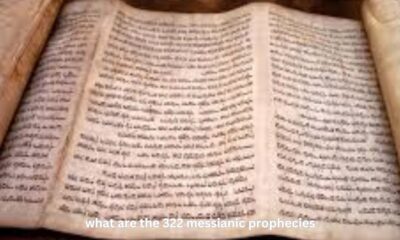
 GENERAL8 months ago
GENERAL8 months agoUnveiling the 322 Messianic Prophecies: A Deep Dive
-

 HEALTH6 months ago
HEALTH6 months agoPure Clarity: The Power of Saline Contact Solution
-

 TECHNOLOGY8 months ago
TECHNOLOGY8 months agoWhat happened to spank bang
-

 FASHION8 months ago
FASHION8 months agoDebonair blog:The Art of Stylish Living
-

 ENTERTAINMENT8 months ago
ENTERTAINMENT8 months agoWhat Is JerkMate? Exploring the Features and Purpose
-
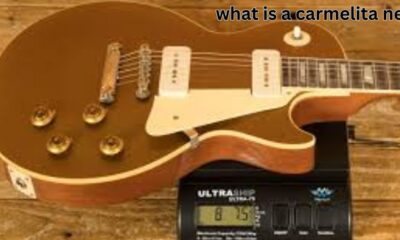
 FASHION8 months ago
FASHION8 months agoUnderstanding the Carmelita Neck: A Unique Fashion Detail
-

 BUSINESS8 months ago
BUSINESS8 months agoCrypto FintechZoom: Navigating the Future of Digital Finance
-

 ENTERTAINMENT8 months ago
ENTERTAINMENT8 months agoDrake Exposed: The Untold Truth Behind the Music and Fame
